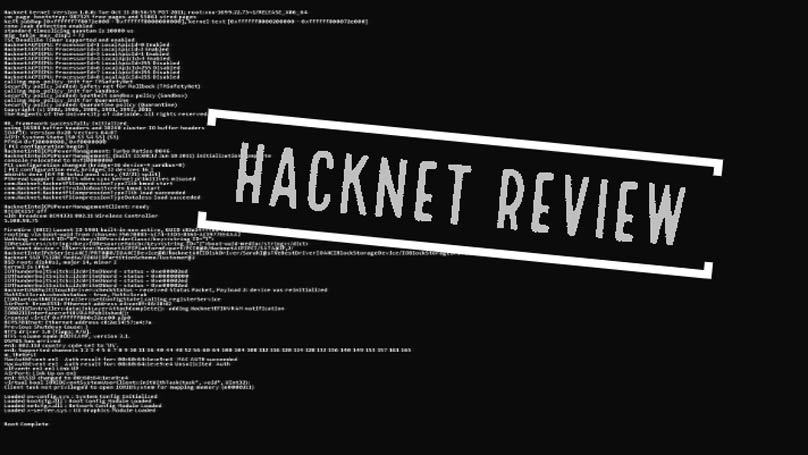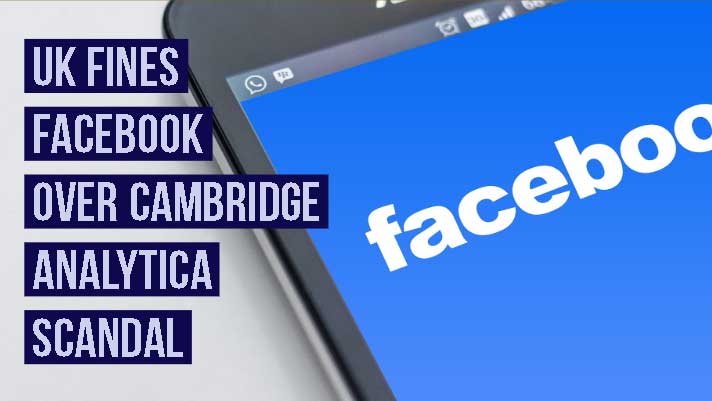CYBER ATTACK
Ransomware hits shipping lines again

Ransomware hits shipping lines again. Chinese shipping firm, COSCO came under a ransomware attack that disrupted its system network in the United States (US).
The attack took place in 24 July 2018, Tuesday, at the Port of Long Beach where the company’s local email system and network telephone communication were in disarray. COSCO’s staff then isolated the affected servers from other networks to mitigate the damage.
Apparently, the ransomware had resided in some of the company’s servers that hosts the corporate website, www.cosco-usa.com, as well as phone and email systems, and WAN and VPN gateways. However, the shipping firm’s global website is up and running, unaffected from the cyberattack.
System back to normal
A week later, the shipping giant had picked up itself and had restored part of the its US computer network system. So far, its internet phone service and company email system had returned to normalcy except for its public mailbox for customer services which remained inaccessible.
COSCO has set a deadline for the restoration of its public mailbox system by the end of this week with the gradual recovery of its network applications in the US. So far, the shipping firm had announced that its global network is stable and secure at the aftermath of the cyberattack last week.
Slow to adapt to New Technology
Perhaps the burning question in everyone mind is how the attack happened, and the consequences that followed and what is meant for the stakeholders.
More than often, the shipping industry has sometime been stereotyped as ancient behemoth, slow to harness new technology with heavy reliance on big machinery and labor intensive in nature.
It was due to these factors that led Ken Munro, a researcher of Pen Test Partner, to coin that cybersecurity in shipping is still “in its infancy”.
Comparing the shipping cyberattack to doomsday movie scenarios, Munro foresaw hackers in hijacking vessels digitally and changed ships’ courses at the click of a mouse.
“We tested over 20 different Electronic Chart Display and Information System (ECDIS) units and found all sorts of crazy security flaws,” Munro told a local media.
“Most ran old operating systems, including one popular in the military (vessel) that still runs Windows NT.”
In the shipping industry, ECDIS is often used by navigators to autopilot and steering of vessels to destinations.
Upgrade and update are a must
An old and non-updated system is just inviting a break in for hackers to hijack a multi-million assets such as tankers, cruise ships and containerships.
And the consequence can be catastrophic as oil tankers may be used an ‘kamikaze’ or set on suicidal collision course against key military installations by the terrorists or even used to block ports access in ransoming for money.
Indeed, the imagination ran wild for a hijacked ECDIS vessels and often such ‘apocalypse’ scene can be prevented with simple precautionary steps.
Updates and revamp of the whole aging computer and network systems are a must for vessels and onshore operation network. For a start, all that one needed is passwords hygiene like frequent changing of passwords and setting up a strong password to secure the network system.
All these precautionary measures may prevent ransomware outbreak such as the case of shipping line, Maersk which was hit by NotPetya ransomware outbreak in June of 2017 and suffered a $300 million in damages.
BREAKING NEWS
Ransom attacks on high profile Instagram accounts

Ransom attacks on high profile Instagram accounts. There has been wave of attacks in which hackers demand bitcoin in order for the Instagram user to get their account back, they threaten to delete the account if the ransom isn’t paid.
There have been several victims of this attack, and they all claim to have received the same message from an attacker named “Pumpam”. The message lets the victim know that the hackers have possession of the account, and to email a particular address in order to start the recovery. It also mentions that the account will be deleted within 3 hours if there is no response.
Victims of the attack found that they could not recover the account through Instagram, as the account’s email address had been changed. This frustration and desperation to get possession of their accounts lead some users to pay the ransom. However, this wasn’t always successful, with some victims claiming that their account was still deleted.
Many of the victims feel let down by Instagram after they didn’t play an active role in helping them gain control of their accounts. Victims felt frustrated dealing with Instagram’s customer support when they only received generic responses to the issue, however this changed when vice’s tech arm Motherboard contacted Instagram about the issue and helped the users get possession back.
At present few details are known about the hacking campaign, including the hacker’s identities and where they are from. We urge Instagram users to be vigilant about their account security, make sure you have a secure password, that you back up your content in the event it is deleted, and don’t click on any nefarious looking links.
Photo by Katka Pavlickova on Unsplash
[stackCommerce layout=”2″ count=”5″ sort=”best_sellers”][/stackCommerce]
BREAKING NEWS
50 Million accounts exposed after Facebook security breach

50 Million accounts exposed after Facebook security breach. Facebook has revealed that almost 50 million of its users accounts were left exposed due to a security flaw. Facebook has more than two billion active monthly users, making security a high priority concern. The security breach has caused Facebook’s shares to drop by 3% on Friday, 28 September.
The breach was discovered this week, and is the latest controversy surrounding Facebook after British company Cambridge Analytica gained access to information of 87 million users, and the controversy surrounding disinformation in elections. However, this breach has been the largest in the company’s 14-year history.
Facebook has said the attackers exploited two bugs in the site’s “View as” feature. The feature, which was designed to give users a clearer view of their presence and more control over their privacy, allows users to check what information other people can see about them. The flaw allowed users to gain “access tokens” which allow access to accounts, through Facebook’s video-uploading program for birthday celebrations. Although it’s not yet known when the attack happened, it seems to occurred after the video-uploading program was introduced. Attacked attempted to harvest user’s personal identifiable information (PII). After the attack was discovered, Facebook forced 90 million users to log out. Facebook has not announced where in the world the 50 million users are.
There have been some major changes in Facebook’s security teams after its Chief Security Officer, Alex Stamos left in August this year for a teaching position at Stanford University. Facebook decided to split the team members so that security employees work within different teams across the company, in order to make security an innate part of Facebook.
Facebook’s data breach was a trending topic on Friday with users posting the breaking story as news outlets released it. User’s found that some of their posts were removed because Facebook’s algorithm saw them as suspicious activity or spam.
[stackCommerce layout=”2″ count=”5″ sort=”best_sellers”][/stackCommerce]
BREAKING NEWS
US Online Retail Company suffered a data breach affecting 6.5 million customers

US Online Retail Company suffered a data breach affecting 6.5 million customers. SHEIN debuted in 2008, and steadily grew to become one of the most acclaimed online women’s fashion stores. Their aim is to provide cutting edge fashion with an affordable price tag. The website primarily caters to women age 16-35, and is US based but ships to over 80 countries.
They recently discovered that their servers had been compromised by hackers in an attack that spanned from June 2018 until 22 August 2018 when the threat was recognised. Once SHEIN were away of the threat, they acted immediately, scanning the servers for weaknesses that were exploited and removed all possible back door entry points to the servers.
SHEIN have been selective with what information they have shared with the public; however we do know that email addresses and encrypted password information was obtained from the attack. We recommend that if you have an account with SHEIN, that you change your password as soon as possible, it is also good practise to use different passwords as often as you can, and make them complex, a password manager can help you keep track of your passwords.
The only promising news about this incident is that SHEIN don’t believe any payment card details were obtained by the hackers. However, SHEIN have enlisted an international forensic cyber security team to conduct a thorough investigation into the breach, and as a result will update users on their data if new information comes to light over the coming months.
If you do believe your payment card information has been compromised, the best thing to do is to contact your bank immediately, they will be able to issue a new card and enact any necessary security measures.
[stackCommerce layout=”2″ count=”5″ sort=”best_sellers”][/stackCommerce]
-

 GAME REVIEW7 years ago
GAME REVIEW7 years agoTop Hacking Simulator Games Every Aspiring Hacker Should Play: Part 1
-

 DEALS7 years ago
DEALS7 years agoGreat Ethical Hacking Courses for Beginners
-

 HACKING NEWS7 years ago
HACKING NEWS7 years agoThe APT attacks hitting East Asia
-

 GAME REVIEW7 years ago
GAME REVIEW7 years agoHacknet Review
-

 BREAKING NEWS7 years ago
BREAKING NEWS7 years agoUS Online Retail Company suffered a data breach affecting 6.5 million customers
-

 BREAKING NEWS7 years ago
BREAKING NEWS7 years agoUK Fines Facebook over Cambridge Analytica Scandal
-

 DEALS7 years ago
DEALS7 years agoMusic, Voice and Sound interface kits: What you need to know
-

 HOW TO7 years ago
HOW TO7 years agoHow To Become an Ethical Hacker – Beginners Guide
